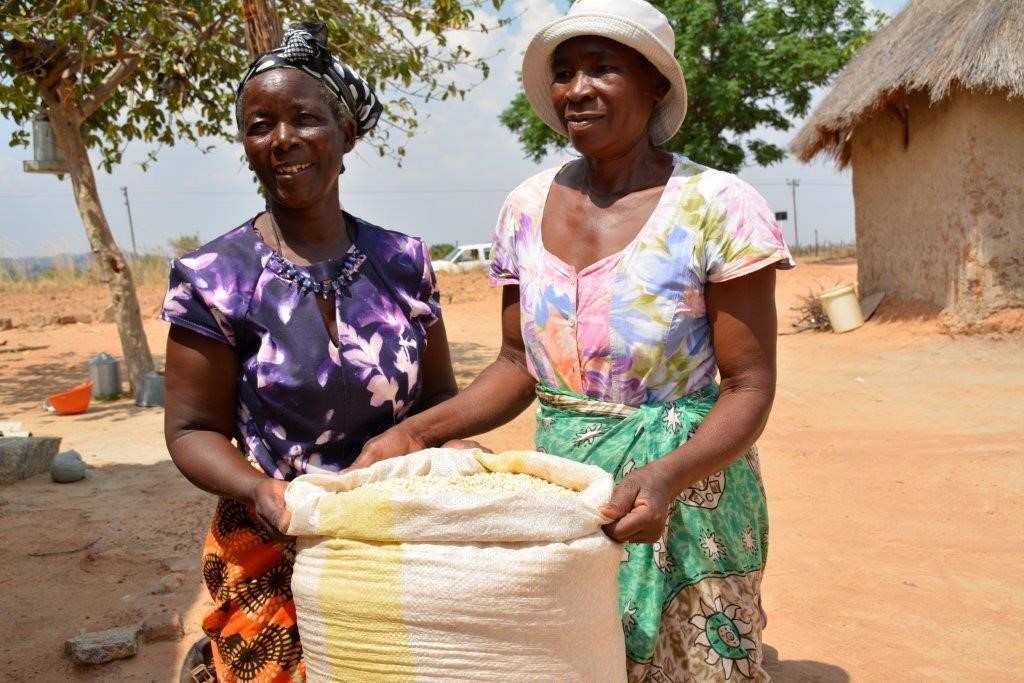Nutrition, health and food security
As staple foods, maize and wheat provide vital nutrients and health benefits, making up close to two-thirds of the world’s food energy intake, and contributing 55 to 70 percent of the total calories in the diets of people living in developing countries, according to the U.N. Food and Agriculture Organization. CIMMYT scientists tackle food insecurity through improved nutrient-rich, high-yielding varieties and sustainable agronomic practices, ensuring that those who most depend on agriculture have enough to make a living and feed their families. The U.N. projects that the global population will increase to more than 9 billion people by 2050, which means that the successes and failures of wheat and maize farmers will continue to have a crucial impact on food security. Findings by the Intergovernmental Panel on Climate Change, which show heat waves could occur more often and mean global surface temperatures could rise by up to 5 degrees Celsius throughout the century, indicate that increasing yield alone will be insufficient to meet future demand for food.
Achieving widespread food and nutritional security for the world’s poorest people is more complex than simply boosting production. Biofortification of maize and wheat helps increase the vitamins and minerals in these key crops. CIMMYT helps families grow and eat provitamin A enriched maize, zinc-enhanced maize and wheat varieties, and quality protein maize. CIMMYT also works on improving food health and safety, by reducing mycotoxin levels in the global food chain. Mycotoxins are produced by fungi that colonize in food crops, and cause health problems or even death in humans or animals. Worldwide, CIMMYT helps train food processors to reduce fungal contamination in maize, and promotes affordable technologies and training to detect mycotoxins and reduce exposure.
Improved maize offers new economic opportunity to Kenyan family
 Innovations
Innovations
Improved maize varieties offer new economic opportunity to families in Kenya.
Can sub-Saharan Africa meet its future cereal food requirement?
 Nutrition, health and food security
Nutrition, health and food security
To satisfy the enormous increase in demand for food in sub-Saharan Africa by 2050, cereal yields must increase to 80 percent of their potential.
Wheat rust poses food security risk for global poor, says DFID’s Priti Patel
 Nutrition, health and food security
Nutrition, health and food security
Wheat rust monitoring efforts are not only keeping the fast-spreading disease in check, but are deployed to manage other crop diseases, said a scientist at a scientific meeting in London.
Advice for India’s rice-wheat farmers: Put aside the plow and save straw to fight pollution
 Innovations
Innovations
Recent media reports show that the 19 million inhabitants of New Delhi are under siege from a noxious haze.
Agricultural biodiversity key to future crop improvement
 Climate adaptation and mitigation
Climate adaptation and mitigation
Conserving and using agricultural biodiversity to create better crops can help meet several sustainable development goals and stave off further species extinctions.
New Publications: Durum wheat is becoming more susceptible to rust globally
 Innovations
Innovations
Leaf rust is increasingly impacting durum wheat production worldwide.
Sustainable agriculture poised to save Mayan rainforests from deforestation
 Capacity development
Capacity development
Sustainable farming practices allow smallholder farmers to improve maize yields while reducing deforestation in Mexico, report finds.
Improved genetic analysis offers faster, more precise results to crop breeders
 Innovations
Innovations
Researchers improve global collaboration on harnessing genes in breeding that can help the crop withstand the effects of climate change.
Drought- and heat-tolerant maize tackles climate change in southern Africa
 Climate adaptation and mitigation
Climate adaptation and mitigation
CIMMYT’s drought-tolerant varieties have been delivered to three million farmers across Africa.
Combating spread of MLN in Africa poses unique but surmountable challenges, seed health specialist says
 Innovations
Innovations
Maize lethal necrosis poses a major concern to researchers, seed companies and farmers in sub-Saharan Africa.
New Publications: With climate change, pests likely to spread to new agricultural areas
 Nutrition, health and food security
Nutrition, health and food security
Pests are likely to spread as climate change continues to impact farming systems globally, according to a new study.
Improved drought tolerant maize varieties: a sustainable solution to climate change
 Nutrition, health and food security
Nutrition, health and food security
Stakeholders in the agricultural sector met in Nairobi, Kenya, for the 4th Annual Food Security Conference (AFSC) on 12-13 October 2016.
First drought tolerant and insect resistant “stacked” transgenic maize harvested in Kenya
 Innovations
Innovations
For the first time, transgenic maize hybrids that combine insect resistance and drought tolerance have been harvested from confined field trials.
Promoting drought tolerant maize seed in southern Africa
 Nutrition, health and food security
Nutrition, health and food security
CIMMYT held seed fairs in Zimbabwe to promote the sharing of information and knowledge about new seed options for farmers.
National maize stem borer mass rearing laboratory inaugurated in Pakistan
 Nutrition, health and food security
Nutrition, health and food security
CIMMYT inaugurated the first national maize stem borer mass rearing laboratory at the National Agricultural Research Center in Islamabad on 25 October 2016.
